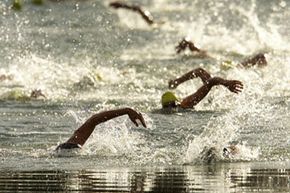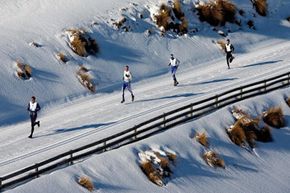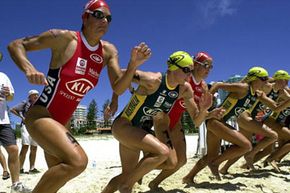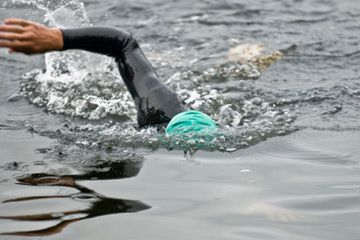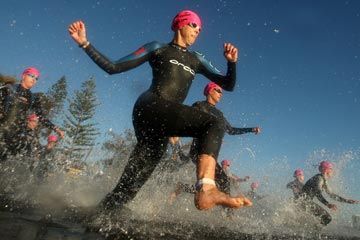Triathlon is one of the fastest growing athletic events in the world. According to the International Triathlon Union (ITU), the sanctioning body for competitive triathlons worldwide, triathlon participation grew 300 percent in the past five years [source: ITU]. Membership in USA Triathlon, the American racing body, jumped 20 percent between 2008 and 2009 alone [source: USA Triathlon].
Despite the grueling nature of the sport, over 1.2 million Americans participated in a traditional triathlon in 2009 [source: USA Triathlon]. A traditional triathlon consists of three legs: swimming, cycling and running, in that order.
Advertisement
Even among traditional triathlons, the lengths of each leg can change considerably. The Olympic triathlon involves a 1.5-kilometer (0.93-mile) swim, a 40-kilometer (24.9-mile) bike ride and a 10-kilometer (6.2-mile) run. But there are also shorter and longer courses. The shorter "sprint" triathlon -- by far the most popular triathlon in America -- requires a 750-meter (0.46-mile) swim, a 20-kilometer (12.4-mile) bike ride and a 5-kilometer (3.1-mile) run. It's exactly half the length of the Olympic triathlon. Then there's the famed Ironman triathlon with a 3.86-kilometer (2.4-mile) swim, 180-kilometer (112-mile) bike ride followed by a 42.2-kilometer (26.2-mile) run -- yup, a full marathon.
The exploding popularity of the sport -- which is attributed to a growing health-consciousness among adults in the United States and the visibility of triathlon starting with the 2000 Olympic Games in Sydney -- has led to innovative new course designs, distances and disciplines [source: USA Triathlon]. Fans of outdoor sports like mountain biking and cross-country skiing have thrown their hats into the ring. Some people even run the race in reverse.
The variety and creativity of non-traditional triathlons is proof that triathlon is a living, breathing, expanding sport with a bright future. On the following pages, we'll talk about some of the most popular twists on the traditional triathlon, starting with the duathlon.
Advertisement

